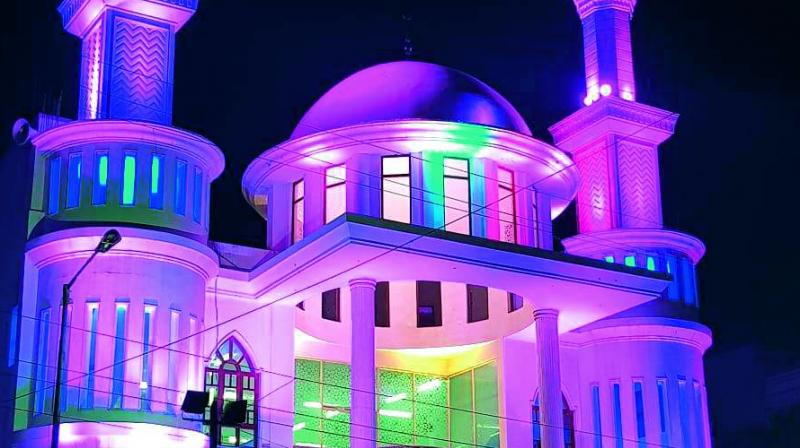Hyderabad: It's time imams got their due

Hyderabad: The imam (one who leads the prayers), muezzin (one who gives the prayer call) and other caretakers of a mosque fight all odds to make a livelihood owing to the low salaries paid to them by the masjid committees.
On an average, the imam is paid about Rs 4,000 a month while the muezzin is paid about Rs 2,500 a month, the sweepers and cleaners even less. As a result, they are forced to search for other alternatives of employment to supplement their regular income. “We try to have two decent meals every day. The masjid committees say that our salaries are paid through the revenue the mosques get. Except for posh colonies, seldom do people donate money for the management of mosques. Even if there is good revenue, we are not paid accordingly as the salaries are decided by the management,” said an Imam of a mosque in Jahanuma of Old City.
A muezzin, working at a mosque in Falaknuma doubles up as a fruit merchant to supplement his income. “We have to be present during all the five times of the prayers daily. Yet we are underpaid and depend on donations from the faithful who understand our needs during Ramzan,” he said.
Most of the imams employed at the mosques in the city are hafiz (one who knows the Quran by heart) and have passed out from various Islamic schools in the state. The TS Wakf Board pays an honorarium of Rs 1,000 each to the imams and muezzin every month.
“Imams and muezzins have a very high position in the community. It is shameful that they are not paid decently by the managements of the mosques. The problem can be redressed only if the community takes it as a responsibility and increases their donations to the mosques,” feels Mohd Mustaq Malik of Tehreek Muslim Shabban.
Worldly comforts make it easy for the devout
Mosques across the city are witnessing a sea of transformation. Once termed just clean spaces for reciting prayers, worldly comforts including air conditioners are being provided.
Several mosques, especially those constructed after the turn of the century, are multi-storey facilities equipped with air conditioners, modern toilets, “Ghusal facilities” (body purification before burial). They also double up as Islamic learning centres.
Most mosques constructed in recent years are double- or three-storey complexes with facilities for parking. “ACs are being installed by the faithful. Many mosques are equipped with ACs for the benefit of namazis. Mosque committees which have high revenue allow them to be installed for they have to pay the monthly power bills,” said khateeb Ilyas Shamshi of the Hari Masjid at Badi Chowdi, Koti.
There are about 1,500 mosques in the city and about half of them have two storeys or more. A few mosques taking into account the rise of apartment culture are constructing Ghusal Khana-e-Mayyat for washing and shrouding the dead. “With people staying in flats, there is no space to give ghusal, so the mosque managements have come out with the idea,” said Mr Mohd Muneerudddin, member of a masjid committee at Nampally.
Many mosques have added extra floor especially in the commercial hubs like Abids, Rastrapathi Road, Secunderabad, Jubilee Hills, Banjara Hills, Begumpet and other areas. “The mosques brim with namazis during Ramzan and regular Fridays,” said religious scholar Mohd Mushtaq Malik.
The newer mosques are being constructed on the West Asia model.
“Earlier, the city had Qutb Shahi mosques. The new mosques bear some semblance to the eminent mosques in West Asia,” said architect Mohd Obaidullah.
People are donating for decorations including calligraphy on walls and providing chandeliers. Funds are channelled from the community.
“There is a belief that one who pools money for construction of a mosque will be rewarded in the world after. So people especially NRIs contribute a lot of money for construction of mosques in their neighbourhood,” said Mr Mohammed Akram, who raises funds for mosque construction.

